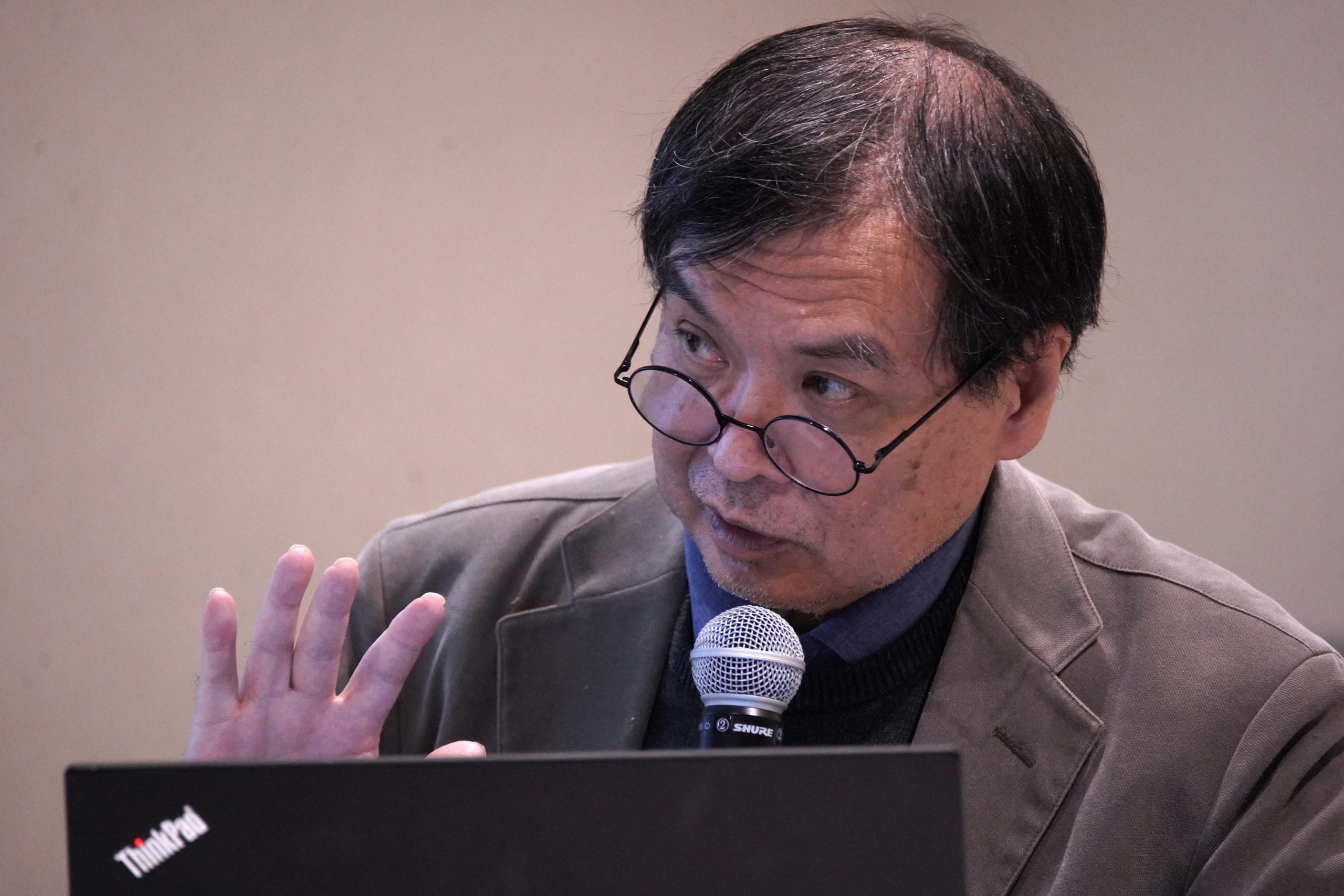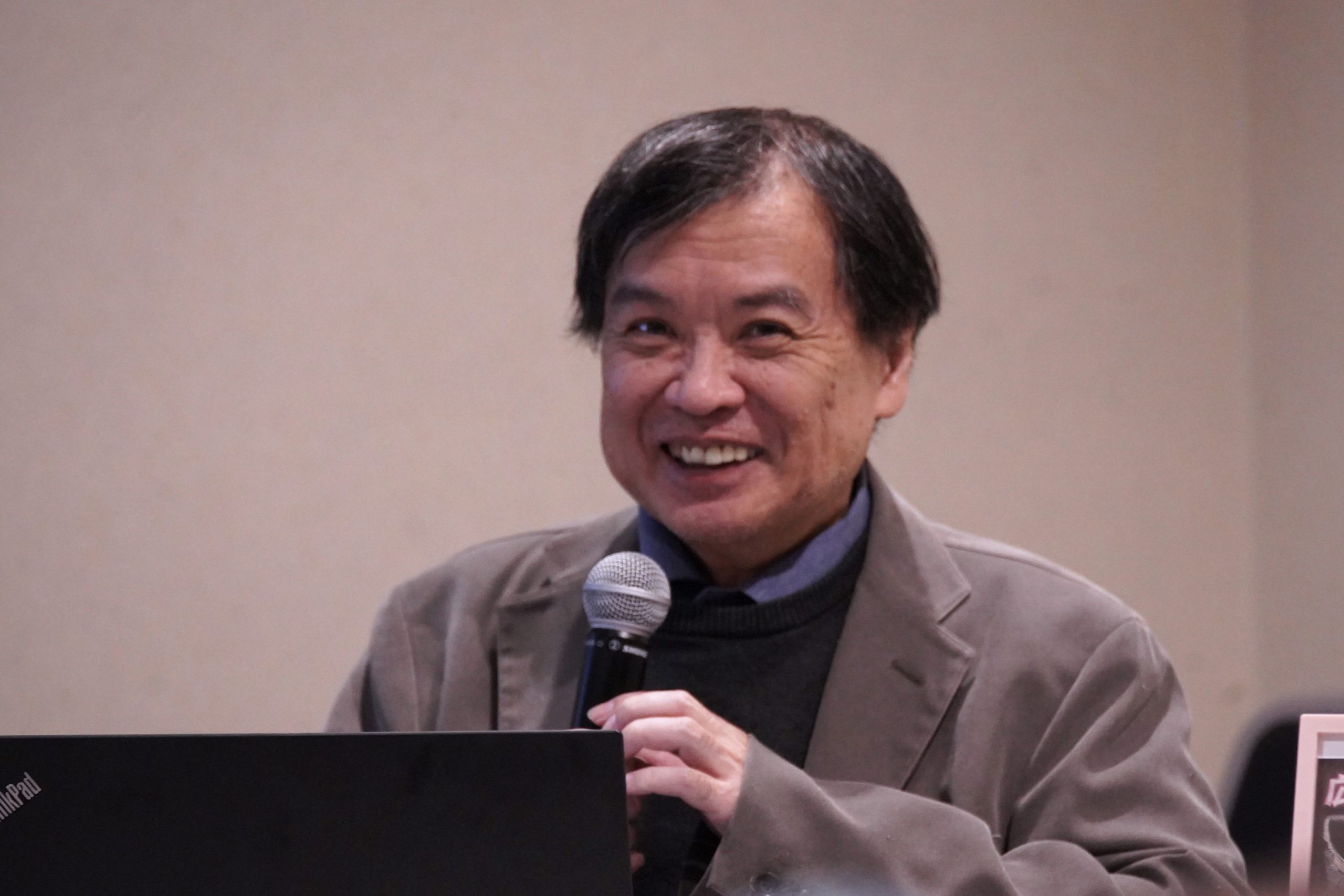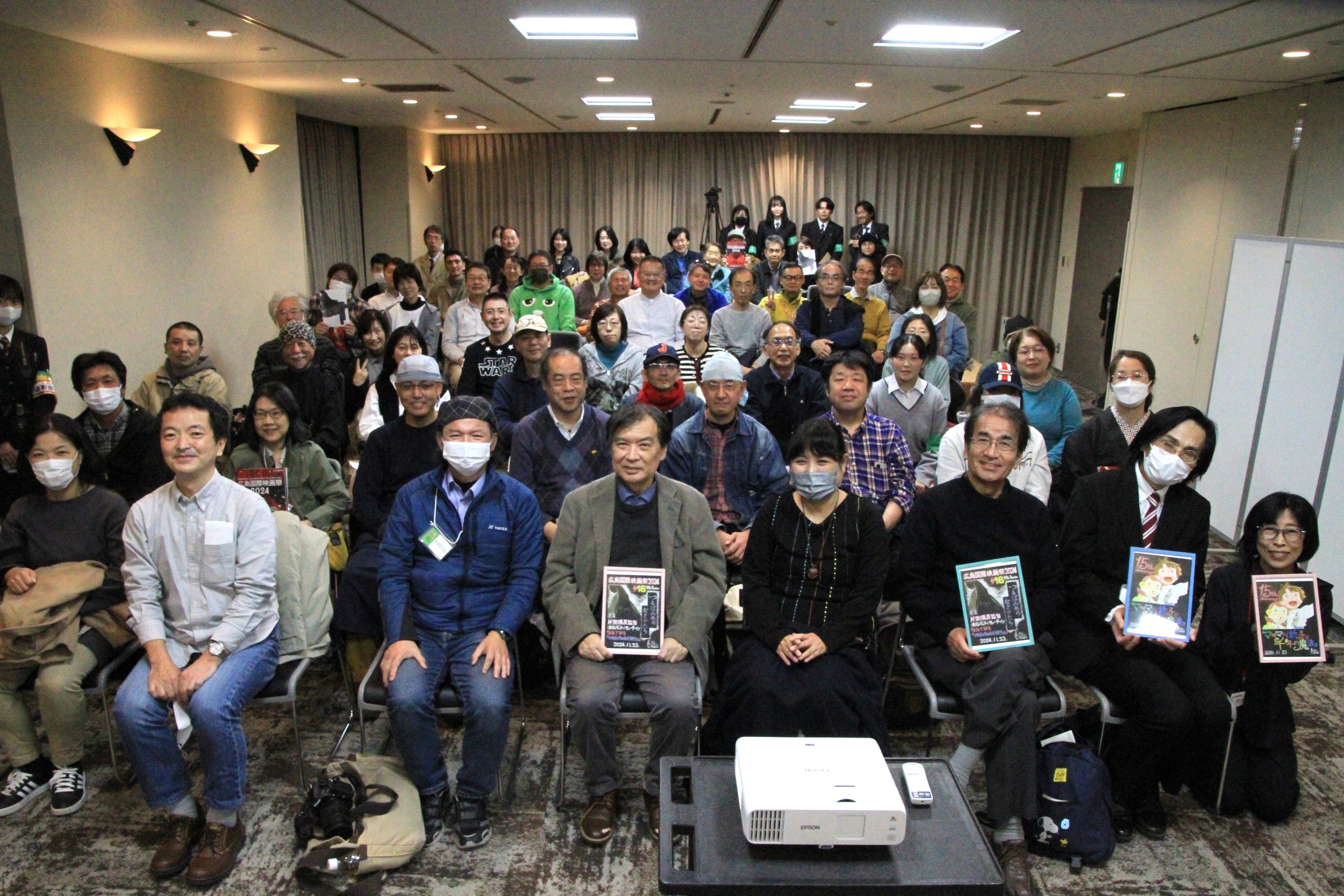News
2024/11/23
Behind-the-scenes talk on the current production of “The Mourning Children: Nagiko and the Girls Wearing Tsurubami Black”! Teach-in by Director Sunao KATABUCHI
On November 23 (Sat), at 13:00 p.m., a teach-in featuring Director Sunao KATABUCHI, who is currently working on the animated film “The Mourning Children: Nagiko and the Girls Wearing Tsurubami Black”, was held at NTT CRED Hall No.2. This film depicts the Heian era, the world in which the author of “The Pillow Book”, Sei Shonagon, lived. Based on numerous historical documents and thorough research, Director KATABUCHI discussed the behind-the-scenes process of animating the Heian period in a way that departs from the stereotypical “refined” image.
The first topic Director KATABUCHI addressed was his meticulous approach to colors.
In the Heian period, each color carried specific meanings, and clothing colors changed depending on social status and circumstances. Colors served as tools to signify various situations. Director KATABUCHI explained that he went so far as to investigate the dates and weather conditions of events from a thousand years ago, verifying whether the clothing colors matched the historical context. His dedication to managing every scene’s date and details in a database left the audience astonished.
He shared an example from his research: when a historical record described the guardian lion-dogs at the Imperial Palace as yellow and white, he felt something was off. After further investigation, he concluded they were likely gold and silver. “When it comes to colors, the topic can branch out in countless directions, but it’s crucial to keep researching until everything makes sense,” he said, offering a glimpse into his relentless pursuit of accuracy and the intricate craftsmanship behind his work.
Next, Director KATABUCHI discussed his analysis of residential environments.
By comparing various documents, he deduced how unusually large spaces might have been used, calculated room sizes and stair heights, and incorporated these elements into detailed floor plans. He described the challenges of creating scenes that align with historical evidence while accounting for the positioning of characters. Even in scenes where designs were already complete, he frequently made revisions to ensure greater authenticity. “Once I realize something doesn’t fit, there’s no helping it—I have to fix it,” he said, describing the iterative nature of his process.
“Focusing only on the ‘splendid’ or ‘refined’ aspects means you miss out on two-thirds of what life in the Heian period was really like. I want to embrace the era in its entirety,” Director KATABUCHI declared with passion. The anticipation for how this dedication will shape the final work continues to grow.
As for the color in the title, “Tsurubami Black”, it refers to a color extracted from oak acorns. Director KATABUCHI revealed that he is currently collecting acorns and expressed his curiosity about experimenting with color extraction in the future. Perhaps we’ll hear more about the results of his experiments someday!
« Japan Premiere! The screening of “TOUCH” and a talk-show by Director Baltasar KORMÁKURScreening of “Mai Mai Miracle” and Talk Show by Director Sunao KATABUCHI, a “Permanent Regular” of Hiroshima International Film Festival »




